Where Essential Oils Are Used
Essential oils have been gaining popularity for their various benefits and uses in recent years.
From aromatherapy to skincare, these potent oils offer a natural and holistic approach to wellness.
Explore what essential oils are, how they are made, the different types available, and the benefits of incorporating them into your daily routine.
Learn about safety precautions when using essential oils and the various ways they can be used.
Whether you seek relaxation, pain relief, or natural cleaning solutions, essential oils may be the answer you are looking for.
Key Takeaways:
What Are Essential Oils?
Essential oils are highly concentrated plant extracts that capture the natural fragrance and benefits of the source plant. They are extracted through various methods such as distillation or cold pressing, resulting in potent oils with therapeutic properties.
During distillation, steam is used to extract the aromatic compounds from the plant material, which are then condensed into a liquid form. Cold pressing, on the other hand, involves mechanically pressing the plant to release the oils.
The essence of essential oils lies in their complex chemical composition, comprising volatile compounds that carry the distinctive aroma and therapeutic properties. These oils are widely used in aromatherapy, skincare, and even as natural remedies for various ailments.
How Are Essential Oils Made?
Essential oils are made through the extraction of natural plant compounds, ensuring high quality and purity.
The extraction methods include distillation, where steam is used to separate the essential oil from the plant material, ensuring that the volatile aromatic compounds are captured effectively.
Expression, another common method, involves pressing the plant material to release the oils, commonly used for citrus fruits.
Solvent extraction uses chemical solvents to draw out the oils, which are then removed during the final stages of production to ensure safety and purity.
What Are the Different Types of Essential Oils?
Essential oils come in various types, each offering unique benefits and aromas. Some popular essential oils include Lavender, Peppermint, Tea Tree Oil, and lemon oil, each known for specific properties and uses.
For instance, Lavender oil is renowned for its calming and relaxing properties, making it a popular choice for aromatherapy sessions and skincare routines.
Peppermint oil, on the other hand, is commonly used to promote focus and invigorate the senses due to its refreshing scent.
Tea Tree Oil is prized for its antibacterial and antifungal properties, making it a go-to for skincare concerns like acne or fungal infections.
Lastly, lemon oil is known for its bright and uplifting aroma, often used for cleaning purposes or to enhance mood. Each of these oils brings a distinct set of benefits and applications, adding to the diverse world of essential oils.
Single Essential Oils
Single essential oils are standalone oils extracted from a single plant source, offering targeted benefits and versatility in aromatherapy practices. Each oil carries distinctive properties that cater to specific health and wellness needs.
For example,
- lavender oil is renowned for its calming and relaxing effects, making it a popular choice for promoting better sleep and reducing anxiety.
- peppermint oil is known for its invigorating properties, which can help boost energy levels and alleviate headaches.
Meanwhile,
- tea tree oil is prized for its antiseptic and antibacterial qualities, making it a great natural remedy for treating skin conditions like acne and fungal infections.
Essential Oil Blends
Essential oil blends combine multiple oils to create synergistic effects, enhancing the benefits for skin care and overall well-being.
These customized blends offer a holistic approach to address various health concerns and skincare needs. Mixing lavender oil with tea tree oil can create a powerful blend that balances oily skin and reduces blemishes. Likewise, combining rosehip seed oil with frankincense oil can help with anti-aging effects and promote skin regeneration. The diverse properties of each oil work harmoniously to target multiple skin issues, making these blends versatile and effective additions to any skincare routine.
What Are the Benefits of Using Essential Oils?
Using essential oils can provide a range of benefits for health and well-being. From offering relief for common ailments like anxiety, depression, nausea, and insomnia to reducing inflammation and acting as antimicrobial agents, these oils have proven therapeutic effects.
Moreover,
- Essential oils can help enhance mood and improve cognitive function, making them ideal for promoting mental wellness.
- Their natural fragrances can also aid in stress reduction and relaxation, offering a holistic approach to well-being.
- Many essential oils possess antioxidant properties, which can combat free radicals and protect cells from damage, thereby supporting overall health.
Aromatherapy
Aromatherapy utilizes essential oils to stimulate the limbic system, influencing emotions, memories, and overall well-being. The practice is known for its stress-relieving, mood-enhancing, and relaxation-inducing effects.
When the aromatic compounds from the essential oils are inhaled or applied to the skin, they trigger responses in the limbic system, which is the part of the brain responsible for regulating emotions and memories. These natural scents can evoke positive feelings, calm the mind, and uplift the spirit.
- One of the key principles of aromatherapy is the idea that certain essential oils can have a direct impact on emotional health by promoting relaxation and reducing anxiety.
- Through the diffusion of oils or topical application, individuals can create a harmonious atmosphere that promotes a sense of well-being and tranquility.
Skin Care

One of the primary advantages of incorporating essential oils into your skincare routine is their ability to penetrate deeply into the skin, delivering their potent nutrients directly to where they are needed most. This deep absorption not only nourishes the skin but also helps to stimulate cell regeneration, leading to a more youthful and radiant complexion. Plus their nourishing properties, essential oils can also help to balance oil production, making them suitable for a wide range of skin types.
Natural Cleaning Products
Essential oils are utilized in natural cleaning products due to their antibacterial and antifungal properties. By incorporating therapeutic-grade oils in cleaning solutions, one can ensure effective cleaning while avoiding harsh chemicals.
These oils not only provide a pleasant aroma but also possess powerful antimicrobial effects that can help eliminate harmful bacteria and fungi. Their natural properties make them a safe and eco-friendly alternative to conventional cleaning agents, reducing the exposure to synthetic compounds that can have negative effects on health and the environment.
The versatility of essential oils allows for customizing cleaning blends tailored to specific needs, whether it’s disinfecting countertops, freshening laundry, or purifying the air. Their effectiveness in combating germs and their potential to uplift mood and promote well-being make them a valuable addition to any natural cleaning arsenal.
Pain Relief
Essential oils have shown promise in pain relief and management, particularly for reducing inflammation and soothing discomfort. By targeting pain points and promoting relaxation, these oils offer a natural approach to alleviate various types of pain.
One of the key benefits of essential oils in pain management is their anti-inflammatory properties. When applied or inhaled, essential oils such as lavender, peppermint, and eucalyptus can help reduce swelling and inflammation, providing relief to those suffering from conditions like arthritis, muscle soreness, or migraines. The aroma of these oils can also stimulate the limbic system in the brain, which controls emotions and memory, further enhancing their pain-relieving effects.
What Are the Safety Precautions when Using Essential Oils?
While essential oils offer numerous benefits, it is essential to take safety precautions to avoid adverse reactions. Diluting oils, performing patch tests, and using caution during pregnancy are crucial steps to ensure safe usage.
When diluting essential oils, a common guideline is to use a carrier oil like sweet almond or coconut oil to lessen the potency. Patch tests can help determine skin sensitivity before widespread use, preventing potential irritations or allergies.
For pregnant individuals, certain oils like sage, rosemary, and camphor are best avoided due to the risk of uterine contractions. Children require especially gentle dilution ratios, and some oils like eucalyptus may not be safe for younger age groups.
Being aware of these safety measures and restrictions can help maximize the benefits of using essential oils while minimizing the risks.”
Dilute Properly
Proper dilution of essential oils is essential to prevent skin irritation and adverse reactions. Following recommended dilution ratios and guidelines for topical application helps minimize the risk of skin sensitivities.
Essential oils are highly concentrated extracts from plants, making them potent and powerful. When applied directly to the skin in their undiluted form, they can lead to allergic reactions, burns, or sensitivity. To avoid these issues, it is crucial to dilute the essential oils with a carrier oil before use. The general rule of thumb is to use a ratio of 2-3 drops of essential oil per teaspoon of carrier oil. For sensitive skin types, it is recommended to start with an even more diluted mixture.
Patch Test First
Conducting a patch test before full application of essential oils helps identify potential allergies or adverse reactions. This simple test can prevent skin sensitivities and ensure safe usage of oils.
During a patch test, a small amount of the diluted essential oil is applied to a small area of skin, usually on the forearm.
The area is then covered with a bandage or adhesive patch to keep the oil in contact with the skin for 24-48 hours.
If redness, itching, swelling, or any other skin reaction occurs during this period, it indicates a possible allergy or sensitivity to the oil.
By conducting patch tests before using oils extensively, individuals can avoid more severe allergic reactions and tailor their skincare routine effectively.
Use Caution During Pregnancy
Pregnant women should exercise caution when using essential oils due to potential risks to the developing fetus. Consulting a healthcare practitioner and adhering to safe practices is essential to ensure the well-being of both the mother and the baby.
Essential oils have gained popularity for their various therapeutic benefits, but their safety during pregnancy requires careful consideration. While some essential oils are generally recognized as safe when used appropriately, many can pose risks due to their concentrated nature. Proper dilution, limited usage, and avoidance of certain oils are crucial aspects to keep in mind. It’s advisable for pregnant individuals to seek guidance from qualified healthcare providers, such as obstetricians or midwives, before incorporating any essential oils into their routines.
Keep Away from Children and Pets
To prevent accidental ingestion or exposure, essential oils should be kept out of reach of children and pets. Safely storing oils in secure locations ensures a hazard-free environment for the well-being of both children and animals.
Children and pets are naturally curious and may be tempted to explore anything within their reach, including bottles of essential oils. This can lead to dangerous situations if oils are ingested or come into contact with sensitive skin. It is crucial to educate household members on the potential risks associated with essential oils and to always use child-resistant caps and secure containers for storage.
Safeguarding these potent substances away from playful hands and curious noses is a simple yet effective way to prevent accidents and ensure a safe living environment.
What Are the Different Ways to Use Essential Oils?

Essential oils can be used in various ways to harness their benefits, including inhalation, topical application, and ingestion (with caution). Each method offers unique advantages based on the desired effects and applications.
Inhalation is one of the most popular methods, either through direct inhalation or using diffusers to disperse the aroma throughout a room. This method is quick-acting and can help with emotional well-being, respiratory issues, and even improving focus.
Topical application involves diluting oils with carrier oils and applying them directly to the skin, offering benefits such as pain relief, skincare, and relaxation. It’s essential to perform a patch test to check for any potential skin sensitivities. To learn more about therapeutic essential oils, visit our blog.
When considering ingestion, always consult a certified aromatherapist or healthcare professional due to the potential risks involved. Safety awareness is crucial to avoid adverse reactions and ensure maximum benefits from essential oils.
Inhalation
Inhalation of essential oils allows for rapid absorption through the olfactory system, impacting the limbic system and promoting emotional well-being. The scents of oils evoke responses that can enhance mood and relaxation.
When essential oils are inhaled, the tiny molecules travel through the nasal cavity, reaching the olfactory receptors. These receptors then send signals to the brain’s limbic system, which is responsible for regulating emotions, memory, and stress responses. This direct pathway to the brain enables swift effects on mood, helping to reduce anxiety, uplift spirits, and induce a sense of calm.
Topical Application
Topical application of essential oils enables direct absorption through the skin, allowing the oils to exert their therapeutic effects locally and systemically. Proper application techniques maximize the benefits while minimizing the risk of skin irritation.
When essential oils are applied topically, they can penetrate the skin and reach the bloodstream, where they can bring about a variety of positive impacts on the body. The skin, being the body’s largest organ, is effectively permeable to these oils, enabling them to work not only on the surface but also deeply within.
Essential oils have the ability to interact with the skin’s receptors, triggering various physiological responses that can influence mood, pain perception, and even immune function.
Ingestion (with caution)
Ingesting essential oils can offer internal benefits, but it requires caution due to potential side effects and interactions. Using oils internally should be done under expert guidance and in diluted forms to prevent adverse reactions.
Caution is crucial when considering internal usage of essential oils, as the potent nature of aromatherapy essential oils uses can lead to digestive upset, allergic reactions, or even toxicity if used incorrectly. Seeking advice from a qualified aromatherapist or healthcare provider before ingestion is highly recommended to ensure safety and efficacy.
Proper dilution methods play a key role in minimizing the risks associated with internal use. It is important to dilute essential oils in a carrier oil or water to reduce their concentration and potential irritant effects on the mucous membranes of the digestive tract.
What Are the Most Common Uses of Essential Oils?
Essential oils find diverse applications in aromatherapy, massage therapy, natural cleaning products, skincare routines, and pain relief management. Their versatility and benefits make them a popular choice for holistic well-being.
In aromatherapy, essential oils are utilized to enhance mood, alleviate stress, and promote relaxation through inhalation or topical application. When incorporated into massage therapy, these oils help reduce muscle tension, boost circulation, and provide an overall sense of rejuvenation.
In skincare, essential oils are prized for their ability to address various skin issues such as acne, inflammation, and aging, thanks to their antioxidant and antimicrobial properties.
In natural cleaning products, essential oils serve as potent disinfectants that not only cleanse effectively but also leave behind a pleasant, natural fragrance, free from harsh chemicals.
Aromatherapy
Aromatherapy is a popular use of essential oils for stress relief, headache management, and mood enhancement. The scents of oils can positively impact the mind and body, promoting relaxation and well-being.
These powerful oils are derived from plants and flowers through processes like distillation or cold-pressing, retaining their natural benefits for therapeutic use. Essential oils are praised for their ability to reduce stress levels by calming the nervous system and enhancing overall mental clarity. They are known to alleviate headaches by targeting tension and promoting better blood circulation. In the realm of emotional well-being, certain aromas can evoke feelings of positivity, calmness, or invigoration depending on the individual’s needs.
- For instance, lavender oil is a popular choice for its calming properties, helping to induce relaxation and prepare the mind for restful sleep.
- On the other hand, citrus oils like lemon or orange can uplift the mood and boost energy levels, combating feelings of fatigue and low spirits.
All these components contribute to the holistic approach of aromatherapy in balancing mind, body, and spirit for improved overall well-being.
Massage Therapy
Essential oils are commonly used in massage therapy to enhance relaxation, relieve muscle tension, and promote overall well-being.
When combined with carrier oils, essential oils penetrate the skin during the massage, targeting specific areas of tension and stress, allowing for deep relaxation. Different oils like lavender, peppermint, and eucalyptus offer unique benefits, such as calming the mind, reducing inflammation, and improving circulation. The aromatic properties of these oils also stimulate the senses, creating a tranquil atmosphere and enhancing the overall massage experience. Incorporating essential oils into massage therapy can lead to not only physical but also mental rejuvenation.
Natural Cleaning Products
Essential oils are employed in natural cleaning products for their antimicrobial properties and refreshing scents.
Utilizing these natural essences not only cleans your home but also provides an alternative to harsh chemical cleaners that can have adverse effects on both your health and the environment. The use of essential oils like tea tree, lavender, and lemon not only adds a delightful aroma to your cleaning routine but also helps in disinfecting surfaces effectively.
When combined with other natural ingredients like vinegar and baking soda, essential oils can create powerful cleaning solutions that are safe for your family and pets, making your home a healthier place to live. These natural cleaners are biodegradable and do not contribute to water or air pollution, aligning with sustainable practices for a healthier planet.
Skincare and Beauty Products

Essential oils play a vital role in skincare and beauty products, offering solutions for inflammation, acne, and overall skin health. Their natural properties help address various skin concerns and enhance the effectiveness of beauty routines.
The versatility of essential oils is truly remarkable. Whether you are looking to reduce redness and swelling from inflammation or combat pesky breakouts with their antibacterial properties, essential oils have got you covered.
From soothing lavender oil to clarifying tea tree oil, these potent extracts can be tailored to fit a myriad of skincare needs. What’s more, their aromatic scents can promote relaxation and uplift the senses, making your skincare routine a luxurious experience deserving of self-care time.
Pain Relief and Management
Essential oils are utilized for pain relief and management by targeting inflammation, soothing discomfort, and alleviating symptoms. Incorporating oils in pain management routines offers a natural and holistic approach to enhance well-being.
One of the most beneficial uses of essential oils in pain relief is their ability to reduce inflammation, a common root cause of various types of pain. When applied topically or inhaled, oils like peppermint, lavender, and chamomile can help to decrease swelling and promote healing. These oils can provide immediate relief by desensitizing pain receptors, making them a valuable addition to pain management strategies. The calming and analgesic properties of certain essential oils contribute to symptom management, helping individuals cope with discomfort and improve their quality of life.
Frequently Asked Questions
Where Essential Oils Are Used
1. What are essential oils and where are they used?
Essential oils are highly concentrated plant extracts that are used for a variety of purposes, such as aromatherapy, natural cleaning products, and personal care products.
2. Can essential oils be used in cooking and baking?
Yes, certain essential oils can be used in cooking and baking, but it is important to use pure, food-grade oils and to follow proper dilution guidelines.
3. Are essential oils safe to use on pets?
Some essential oils can be toxic to pets, so it is important to do thorough research or consult with a veterinarian before using them around or on your furry friends.
4. Where else can essential oils be used besides for aromatherapy?
Essential oils can also be used in skincare products, hair care products, as natural insect repellents, and even in household cleaning products.
5. Can essential oils be used during pregnancy?
It is important to consult with a healthcare professional before using essential oils during pregnancy, as certain oils may not be safe for use during this time.
6. Are there any precautions to take when using essential oils?
Yes, it is important to properly dilute essential oils, avoid using them on sensitive areas of the skin, and perform a patch test before using them for the first time. It is also important to store essential oils properly and keep them out of reach of children.


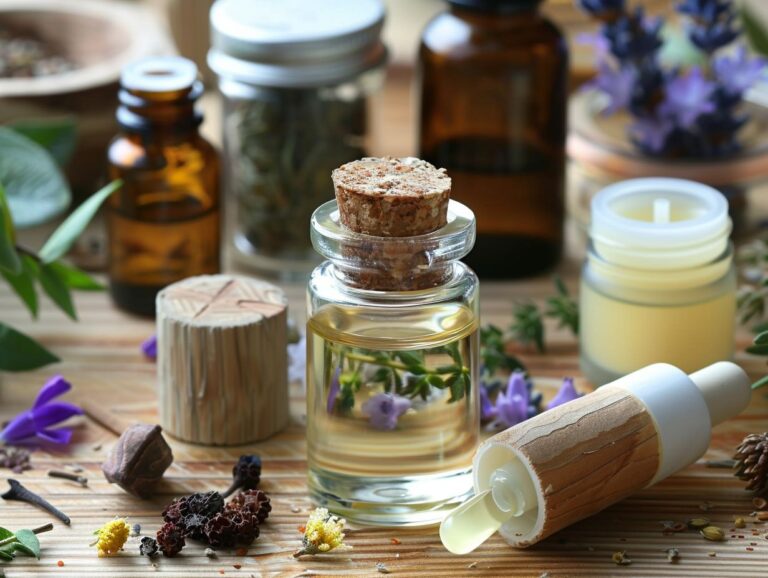
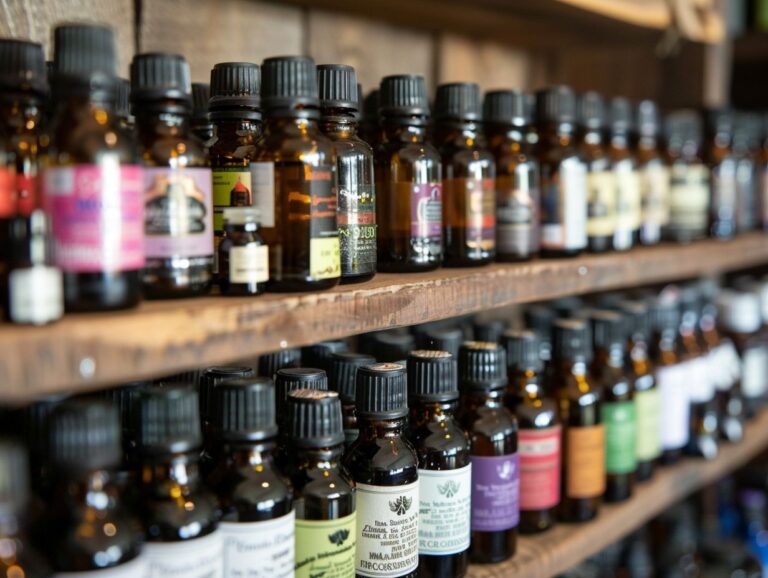
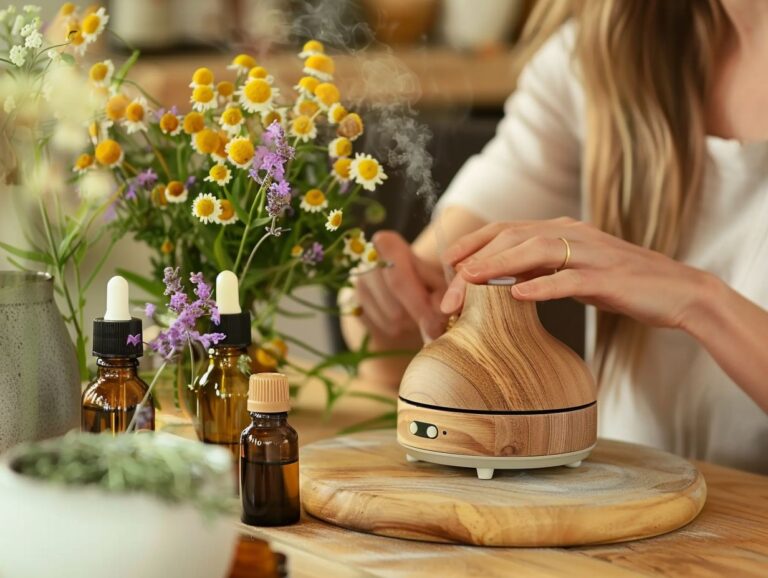
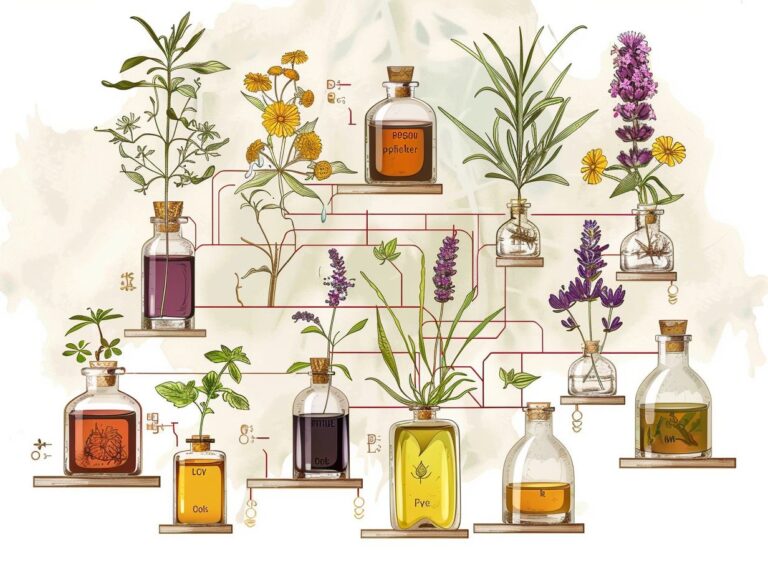

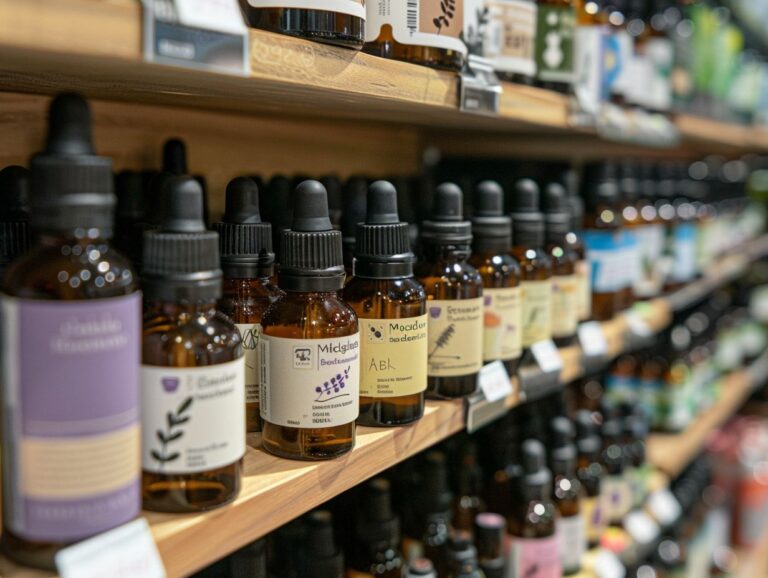
6 Comments